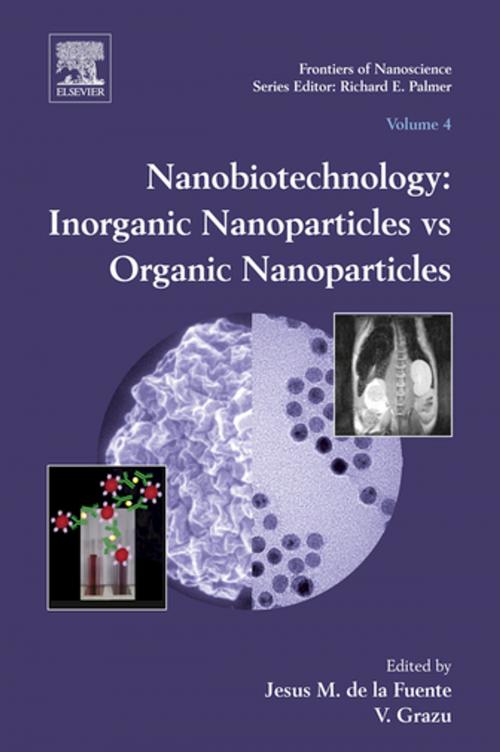Nanobiotechnology
Inorganic Nanoparticles vs Organic Nanoparticles
Nonfiction, Science & Nature, Technology, Material Science, Science, Biological Sciences, Biotechnology| Author: | Jesus M. de la Fuente, V. Grazu | ISBN: | 9780123983046 |
| Publisher: | Elsevier Science | Publication: | June 28, 2012 |
| Imprint: | Elsevier | Language: | English |
| Author: | Jesus M. de la Fuente, V. Grazu |
| ISBN: | 9780123983046 |
| Publisher: | Elsevier Science |
| Publication: | June 28, 2012 |
| Imprint: | Elsevier |
| Language: | English |
Nanotechnology is considered the next big revolution in medicine and biology. For the past 20 years, research groups have been involved in the development of new applications of novel nanomaterials for biotechnological applications. Nanomaterials are also becoming increasingly important in medical applications, with new drugs and diagnostic tools based on nanotechnology. Every year, hundreds of new ideas using nanomaterials are applied in the development of biosensors. An increasing number of new enterprises are also searching for market opportunities using these technologies.
Nanomaterials for biotechnological applications is a very complex field. Thousands of different nanoparticles could potentially be used for these purposes. Some of them are very different; their synthesis, characterization and potentiality are very diverse. This book aims to establish a route guide for non-erudite researchers in the field, showing the advantages and disadvantages of the different kind of nanomaterials. Particular attention is given to the differences, advantages and disadvantages of inorganic nanoparticles versus organic nanoparticles when used for biotechnological applications. A tutorial introduction provides the basis for understanding the subsequent specialized chapters.
- Provides an overview of the main advantages and disadvantages of the use of organic and inorganic nanoparticles for use in biotechnology and nanomedicine
- Provides an excellent starting point for research groups looking for solutions in nanotechnology who do not know which kind of materials will best suit their needs
- Includes a tutorial introduction that provides a basis for understanding the subsequent specialized chapters
Nanotechnology is considered the next big revolution in medicine and biology. For the past 20 years, research groups have been involved in the development of new applications of novel nanomaterials for biotechnological applications. Nanomaterials are also becoming increasingly important in medical applications, with new drugs and diagnostic tools based on nanotechnology. Every year, hundreds of new ideas using nanomaterials are applied in the development of biosensors. An increasing number of new enterprises are also searching for market opportunities using these technologies.
Nanomaterials for biotechnological applications is a very complex field. Thousands of different nanoparticles could potentially be used for these purposes. Some of them are very different; their synthesis, characterization and potentiality are very diverse. This book aims to establish a route guide for non-erudite researchers in the field, showing the advantages and disadvantages of the different kind of nanomaterials. Particular attention is given to the differences, advantages and disadvantages of inorganic nanoparticles versus organic nanoparticles when used for biotechnological applications. A tutorial introduction provides the basis for understanding the subsequent specialized chapters.
- Provides an overview of the main advantages and disadvantages of the use of organic and inorganic nanoparticles for use in biotechnology and nanomedicine
- Provides an excellent starting point for research groups looking for solutions in nanotechnology who do not know which kind of materials will best suit their needs
- Includes a tutorial introduction that provides a basis for understanding the subsequent specialized chapters















